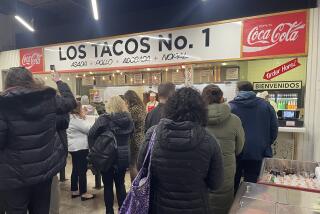Timeline: Key moments in Mexicalifornia history
1769-1823: Led by Junípero Serra, Franciscan missionaries from Spain establish missions in Alta California, from San Diego (1769) to Sonoma (1823).
1821: After a decade of battles, Mexico wins independence from Spain. News reaches California in April 1822.
1828: Mexico allows California’s governor to grant land to private owners. Over 20 years, those governors sell and hand out more than 8 million acres to military men, well-connected families and eager entrepreneurs.
1832: Pío Pico, born at the Mission San Gabriel to parents of European, African and Native American ancestry, becomes the first native-born governor. He serves briefly, then again from 1845 to 1846.
1833: Mexico secularizes the missions, stripping the missionaries of their land and cattle. As ranchers take over former missions, a global market grows for cattle hides (also known as “California bank notes”) and tallow (cattle fat) for soap and candles.
1840: Richard Henry Dana anonymously publishes “Two Years Before the Mast,” detailing his seafaring adventures along the coast of California. (Later editions carry his name.)
1842: Francisco Lopez discovers gold in a Santa Clarita canyon, the first authenticated such find in the state. About 100 prospectors show up, many of them from Sonora, Mexico, but the find plays out quickly and the rest of the world barely notices.
May 1846: U.S. declares war on Mexico and invades California. When Mexico City fails to send troops, Pico hastily sells off land to finance an army of Californios. But by July 1846, Pico has given up and fled to Sonora, close to Mexico City.
December 1846: Californio troops win the Battle of San Pasqual, killing 18 U.S. soldiers -- their last victory.
Jan. 13, 1847: The Treaty of Cahuenga ends the fighting in Southern California.
Jan. 24, 1848: Gold is discovered at Sutter’s Mill in Colona, prompting an influx of thousands of prospectors and immigrants from the U.S., Europe, China and elsewhere. In the next two years, California’s non-Indian population jumps from fewer than 20,000 to more than 200,000.
Feb. 2, 1848: Under threat from U.S. troops in Mexico City, Mexican leaders agree to the Treaty of Guadalupe Hidalgo, giving up more than 525,000 square miles, including California and several neighboring states, in exchange for about $18 million. (Word of the gold at Sutter’s Mill reaches Washington and Mexico City weeks or months later.)
September 1850: California attains statehood.
More to Read
Sign up for The Wild
We’ll help you find the best places to hike, bike and run, as well as the perfect silent spots for meditation and yoga.
You may occasionally receive promotional content from the Los Angeles Times.







